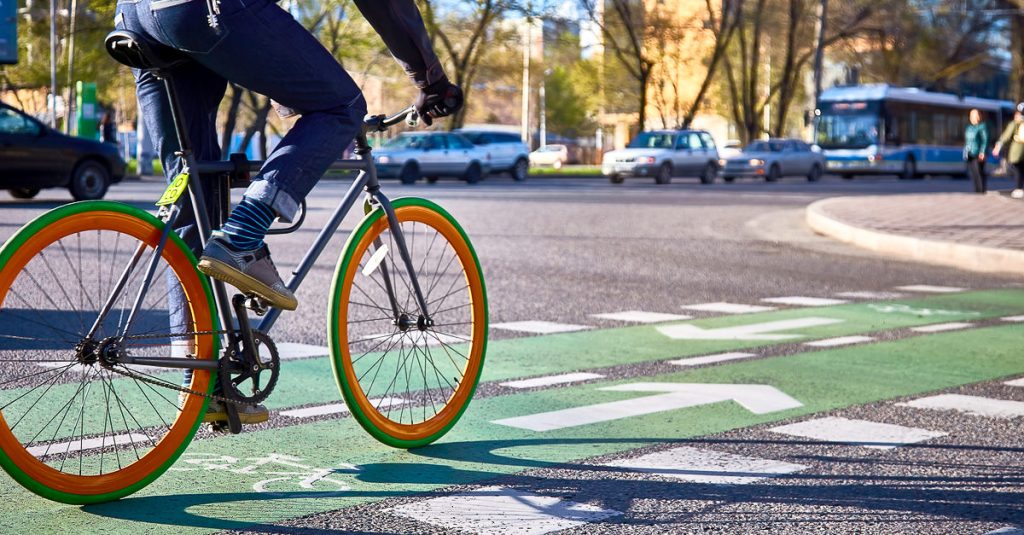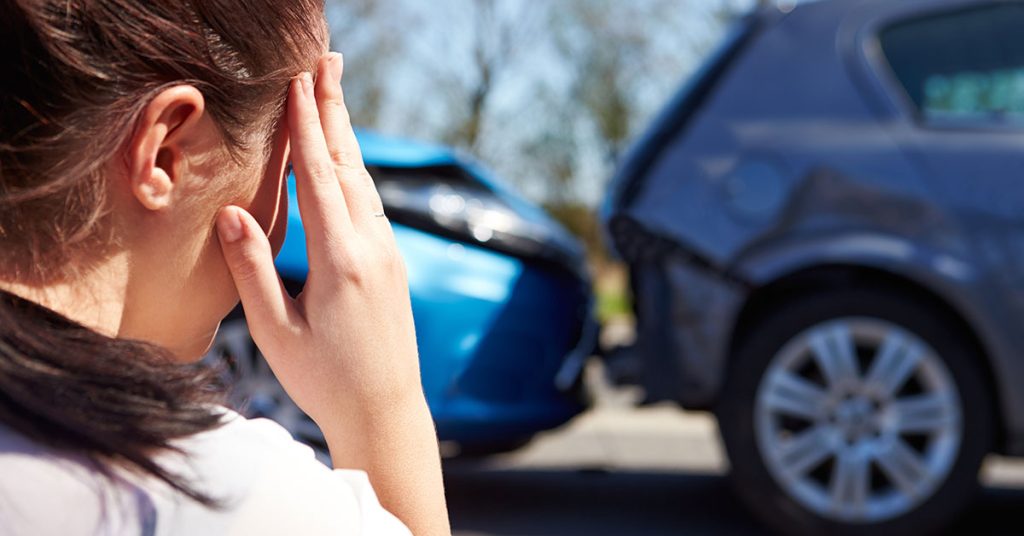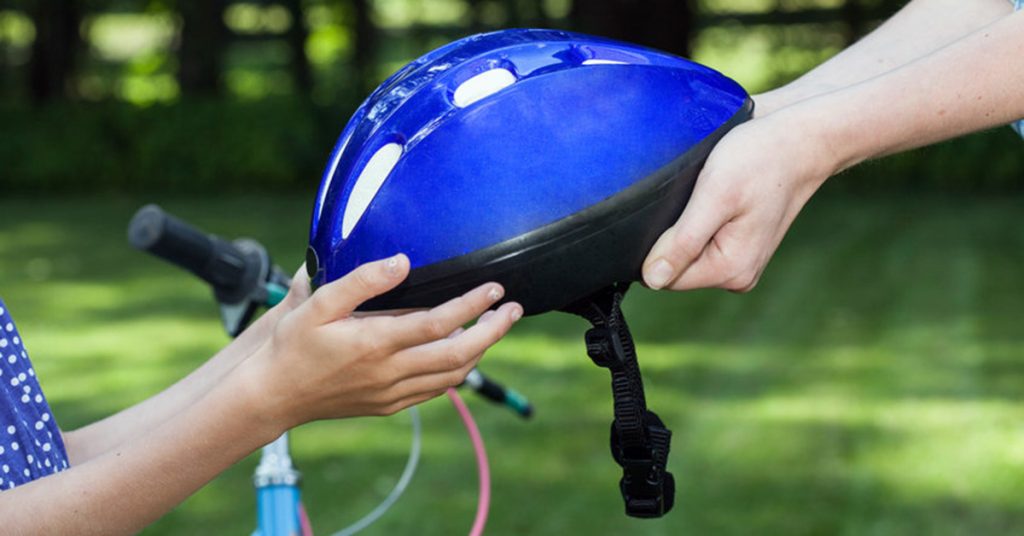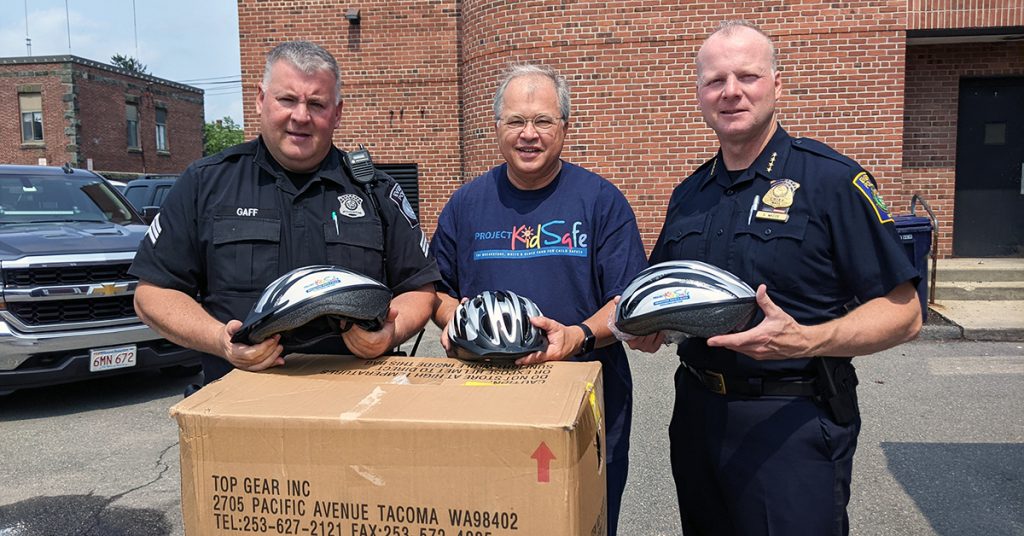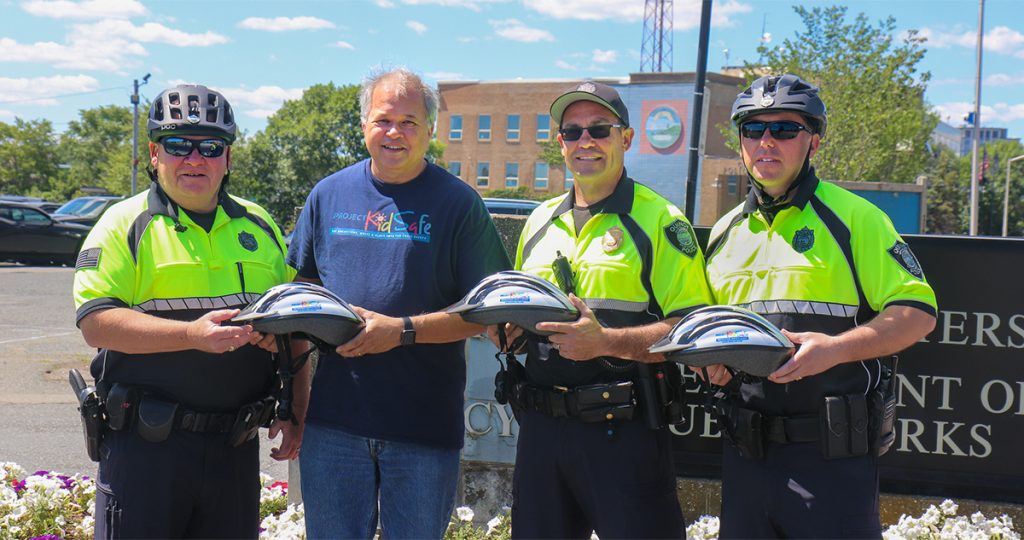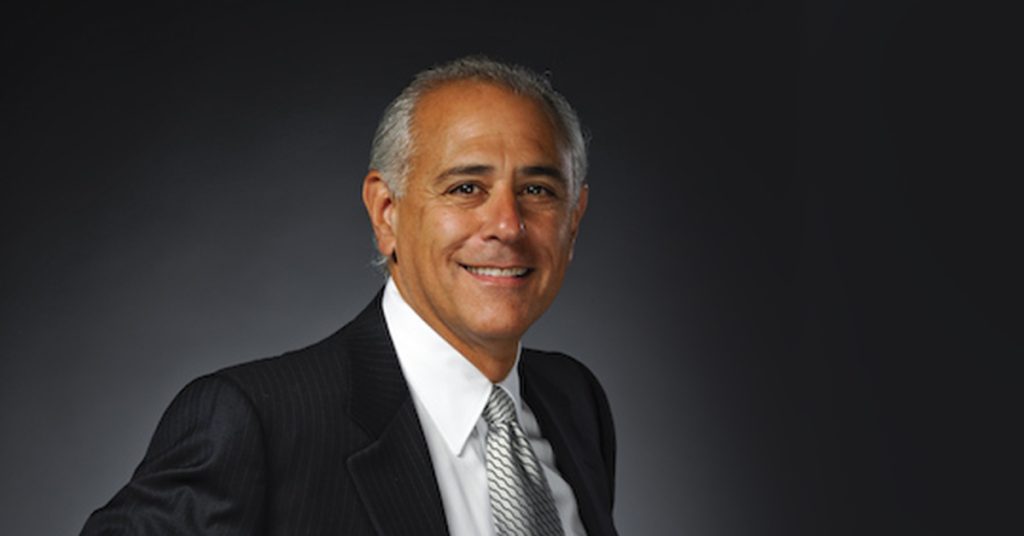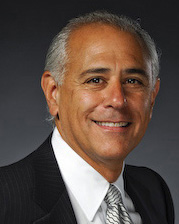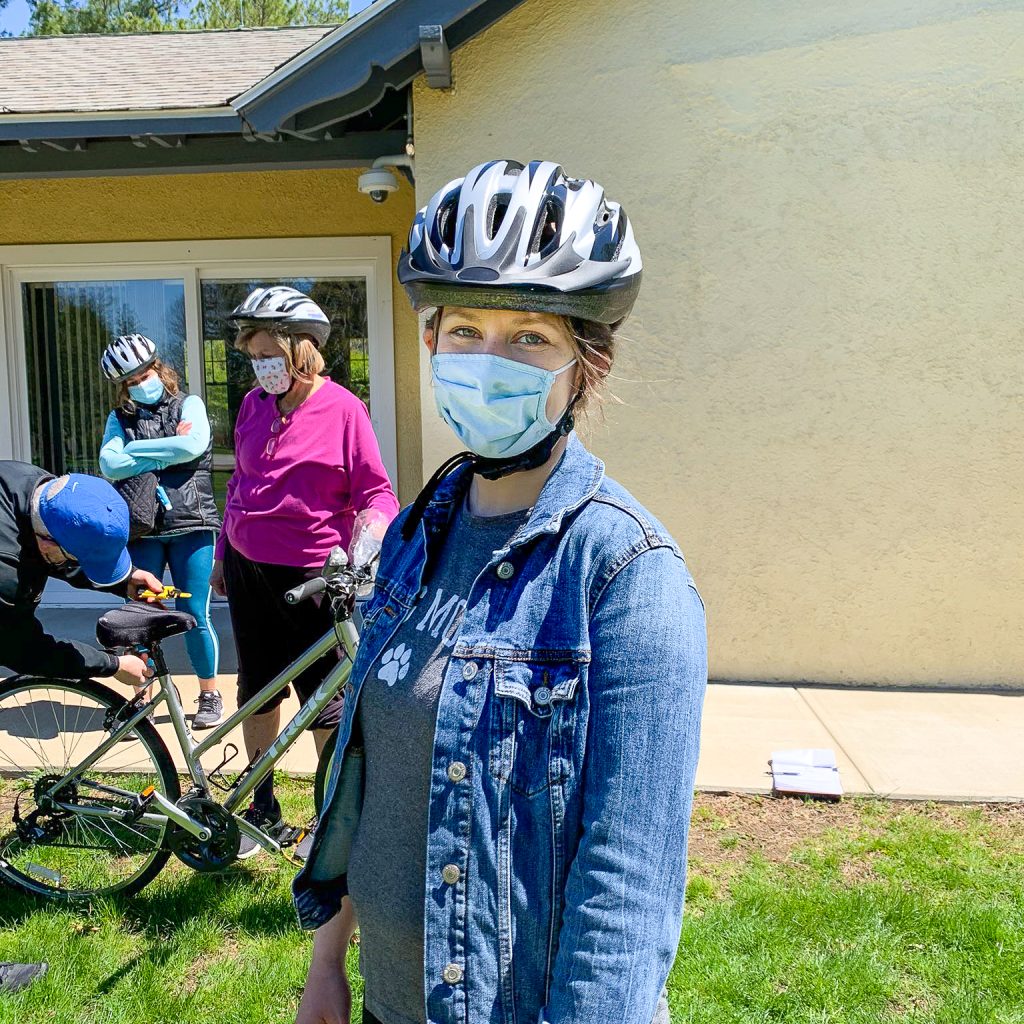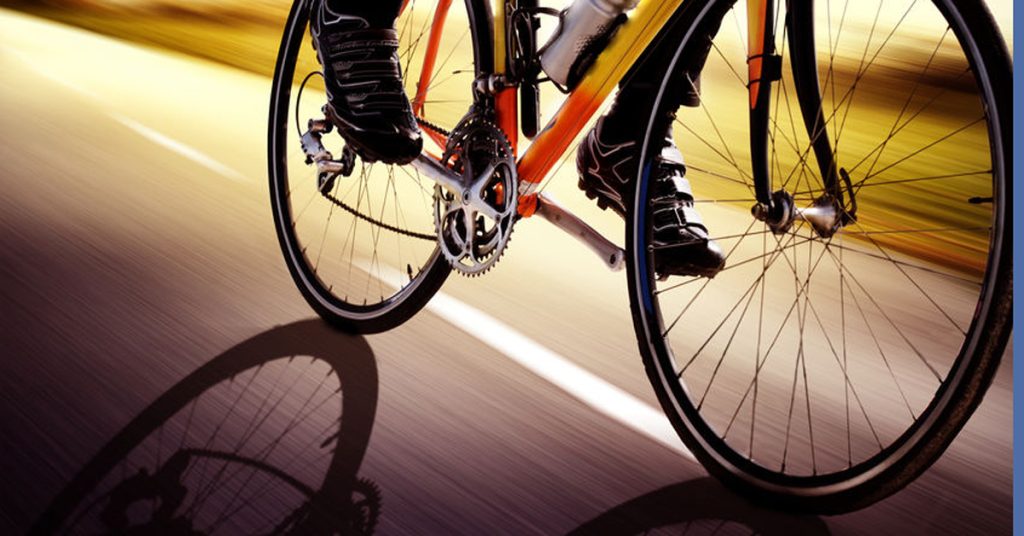Bicycle Accidents
Should Cyclists Have to Stop at Red Lights in Massachusetts?
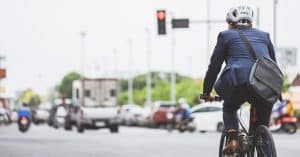 In Massachusetts, there was recently a discussion about bicycles and red lights. Specifically, should cyclists be allowed to travel through red lights when it is safe to do so?
In Massachusetts, there was recently a discussion about bicycles and red lights. Specifically, should cyclists be allowed to travel through red lights when it is safe to do so?
Massachusetts law states every person operating a bicycle “shall be subject to the traffic laws and regulations of the commonwealth.” M.G.L. c. 85, § 11B. Cyclists have a responsibility to stop at red lights, just like drivers, whether they are traveling in the traffic lane, bike lane or in other situations. But bicycles and motor vehicles face much different road conditions, even as they travel alongside each other.
There are times when cyclists need flexibility to travel safely. Sometimes yielding, rather than coming to a full stop at a red light, can help a cyclist avoid a serious injury or help the overall flow of traffic on the road.
Traditionally, many Massachusetts police departments have not conducted enforcement. Until last summer, when the Somerville Police Department stopped 198 cyclists and issued written warnings for cyclists, according to NBC Boston. Somerville Police said the effort – funded by a state safety grant – was about education.
This move drew strong criticism in Somerville and across the Boston area, where many ride bicycles and parking is limited. In July, the Somerville City Council approved a measure calling for the Somerville police chief to adopt a policy of de-prioritizing enforcement of cyclists who treat read lights as stop signs when it is safe to do so. This measure was sent to the city’s traffic and parking committee for review.
The measure mentioned the “Idaho Stop,” though one city councilor said the goal is de-prioritization, not to pass a traffic law, because the city has discretion over enforcement.
What is the Idaho Stop Law?
- Passed in 1982, the “Idaho Stop Law” allows cyclists to treat stop signs as yield signs and red lights as stop signs, according to the League of American Bicyclists.
- Idaho was the only state to pass a law for decades. Since 2017, at least seven other states have passed similar laws. We say similar because most of these states have passed laws allowing cyclists to yield at stop signs, but have not changed laws at red lights, according to a 2023 update from the National Highway Traffic Safety Administration.
- Arkansas, Delaware, Idaho, North Dakota, Oklahoma, Oregon, Utah and Washington all have laws that allow cyclists to yield at stop signs. Just two – Idaho and Oklahoma – have passed laws for both red lights and stop signs.
Stop-as-Yield Laws Associated with Fewer Bicycle Accidents
Massachusetts lawmakers passed vulnerable road user protections into law last December. As a result, drivers must now give cyclists, pedestrians and a list of others at least 4 feet of space when passing. This is a major change for safety.
“Stop-as-yield” laws could be another step for safety. The NHTSA reports these laws are associated with lower rates of bicycle injuries.
In the 1980s, Idaho reported a 14.5 percent decline in bicyclist injuries in the year after the Idaho Stop Law. Decades later, Delaware passed a more limited law allowing cyclists to yield at stop signs. In the first 30 months, there was a 23 percent reduction in bike crashes at stop sign intersections.
Free Legal Consultation – Contact a Boston Bicycle Accident Lawyer
Breakstone, White & Gluck has helped cyclists who have been injured by negligent driving across Massachusetts since 1992. If you have been injured, learn your legal rights for recovering compensation for your medical expenses, lost wages and other financial losses. Our attorneys may also be able to advise you if you have been injured and need to replace a damaged bike. For a free legal consultation, contact Breakstone, White & Gluck at 800-379-1244 or 617-723-7676 or use our contact form.
Driving Safely Near Cyclists in Intersections and Bike Boxes in Boston
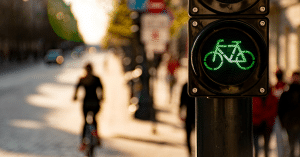
With the warm weather, more cyclists are back out in Massachusetts. As a driver, you may easily see the cyclist in front of you at the intersection and give them extra room. But are you ready for the cyclist who approaches from behind? And what about all the new bike lanes?
As more cyclists return to the road, this is a good time to think about how you can travel safely near them in intersections.
Take a Closer Look at Intersections
Take a closer look at the intersections you travel through. Check the signage, traffic lines, bike lanes and other pavement markings. You may notice some of the pedestrian- and bicycle-friendly improvements communities have made since the pandemic. Certain intersections now have bright green bike boxes or bike lanes crossing intersections. This is the case in Boston, in the area of Staniford and Merrimac streets.
If you see anything new or have questions, ask your local police department or town hall. Another resource is the Massachusetts Driver’s Manual.
Then stay tuned. You may see a few more traffic signs in the near future. On April 1, 2023, a new Massachusetts law took effect, establishing that drivers must leave four feet for safety when passing cyclists, pedestrians and other vulnerable road users.
Where to Expect Cyclists in Intersections
Think about how cyclists approach intersections. Many cyclists will use bike lanes if these are available, but under Massachusetts law, cyclists can also travel into the traffic lane with vehicles. Cyclists can ride on their own or up to two abreast.
Drivers have a responsibility to look for cyclists. Make a point to check front, back, right and left as you wait out the traffic lights. When you look back, make a point to actually look. Don’t just use your vehicle’s technology. Use your rearview mirror and turn to check your blindspot over your shoulder.
Learn About Bike Boxes
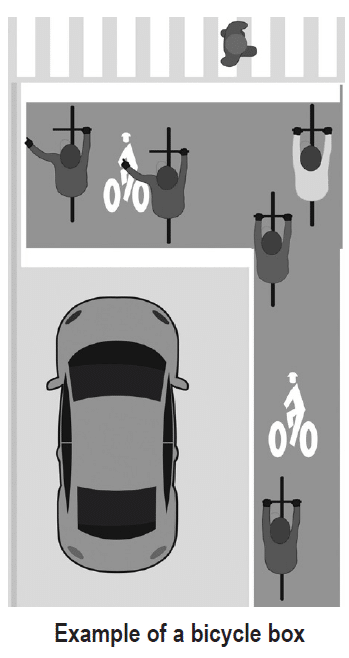
Source: Massachusetts Driver’s Manual
Certain intersections in Massachusetts now make use of the green bike boxes. These are designated spaces for cyclists to wait between cars and traffic lights at intersections. The goal is to make cyclists more visible to drivers and let them get out first when the light changes.
Cyclists can use the bike box to position themselves for left-hand turns. Cyclists who are turning right or traveling straight should stay right in the bike lane.
Cyclists may or may not use the bike boxes yet. But according to the state driver’s manual, drivers have a responsibility to stop before the green bike boxes at red lights, even if there are no cyclists out.
Where to Find Bike Boxes in Massachusetts
Bike boxes are in use in at least 20 U.S. cities, according to the National Association of City Transportation Officials (NACTO).
But they are still relatively new to many cyclists and drivers in Massachusetts.
As of September 2021, the Massachusetts Department of Transportation (MassDOT) had only identified 91 bike boxes in use across the state.
You can find some of these bike boxes in Brookline, Boston, Cambridge and Somerville.
MassDOT also shared results from its 5-year study into the effectiveness of bike boxes. Researchers investigated traffic conditions at 11 intersections in Boston and Somerville.
While the data very was limited, researchers attributed the majority of bike crashes to motorists and bicyclists who did not comply with the bike box regulations.
Researchers reported roughly 60 percent of the bike crashes at intersections occurred when cyclists ran through red lights or drivers failed to yield when making left turns.
Another point was on right-hook crashes. Researchers only reviewed one of these crashes, but said the limited data showed bike boxes may help prevent cyclists from suffering these injuries. They also noted that 72 percent of the intersections in the study utilized “No Right Turn on Red” signs.
MassDOT expects to complete a new study on bike boxes in February 2024.
Boston Bicycle Accident Lawyers – Free Legal Consultation
Breakstone, White & Gluck has over 100 years combined experience representing cyclists who have been seriously injured by bicycle accidents and dooring incidents. If you have been injured, contact Breakstone, White & Gluck and learn your legal rights. We offer a free legal consultation.
New Bike Lanes Help, But Massachusetts Drivers Must Still Slow Down and Watch for Cyclists
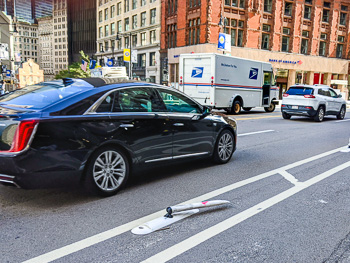
Flexipost down on bike lane at Center Plaza, across from Boston City Hall.
As COVID-19 kept many of us home, Boston and nearby cities built out an impressive 35 miles of new bike lanes in 2020 and 2021, according to a news report.
But, while encouraging safety, bike lanes alone cannot prevent cycling accidents. Drivers still have a responsibility to slow down, travel safely in their lane and use extra caution, especially as they get to know the new infrastructure.
Consider that bike lanes must be a minimum of 5 feet wide under state highway standards. In Boston, the city’s transportation department works to build at least 6 feet wide in areas with high bike traffic and 6 to 7 feet in areas with heavy parking turnover. Then factor in parking, traffic and bus lanes and you have more than covered the widest roads.
Finding New Bike Lanes in Boston, Cambridge and Nearby Cities
If you travel into Boston or Cambridge, you will find several miles of new bike lanes, including both conventional and protected bike lanes.
Conventional bike lanes – also called unprotected bike lanes – are flat lanes which create a designated lane for cyclists using paint and signage. Protected bike lanes are designed to add another layer of safety. These are usually more visible and use physical barriers – such as flexiposts or curbing – to separate cyclists from drivers.
During the pandemic, the City of Boston expanded its bike lane network with protected bike lanes on all roads around the Boston Public Garden. The city is now working to connect key stretches of bike lanes, including at the intersection of Beacon and Arlington streets near the west end of the Public Garden.
Beyond Boston and Cambridge, you can take a drive into Medford, Somerville, Newton or Brookline, among other communities, to see new bike lanes built during the pandemic. Somerville and Medford saw significant bike lane development along Route 28 and the Wellington Bridge, with funding from the state’s Shared Streets and Space Program.
Some of the new protected bike lanes are “quick-build” projects. Keep this in mind as you drive. Cities may now experiment and take flexiposts up and down as seasons and traffic volumes change.
How Boston Drivers Can Avoid Bike Lane Accidents
Now more than ever, it is critical to watch because there are more cyclists out. According to state figures, ridership is up more than 25 percent in many Massachusetts communities as we emerge from the pandemic.
Learn Where Cyclists Are Allowed to Ride
When driving, take a good look at the full road. You may initially notice the traffic lanes, intersections and stop signs. Many drivers, however, overlook the bike lanes, if the road even has them.
If you see bike lanes, consider these a guide. A cyclist may ride in the bike lane. But they may also have to move into the roadway at times to position themselves for a left turn or because the bike lane ends.
When the bike lane ends, a cyclist may choose to stay on the right side of the road or they may attempt to move into the traffic lane. Cyclists are allowed to ride up to two abreast in the traffic lane in Massachusetts. Many cyclists try to avoid this approach to avoid backing up traffic. But you will see this and it is important to give cyclists enough space to make safe decisions.
Drive Slowly
Maintaining a slow and safe speed near cyclists is critical. When you speed, you can easily cross over painted bike lanes or even flexiposts, and you leave yourself less time to respond if cyclists, pedestrians or other drivers make an unexpected move.
Open Car Doors Carefully
Drivers can injure cyclists and pedestrians even after they park. Drivers who open doors without checking, or leave a car door open as they get ready to get out, have caused many dooring accidents and serious injuries to cyclists in the Boston area.
At least 40 states – including Massachusetts – have recognized the danger of dooring and made this a traffic offense, according to the League of American Bicyclists.
The Danger of Parking in Bike Lanes
It is also illegal for drivers to park in bike lanes in Massachusetts under M.G.L. c. 89, § 4D. Drivers have to remember bike lanes are travel lanes for cyclists. If you park in a bike lane and a cyclist is injured as a result, you may be fined by local police, just as you can be if you open a door into a cyclist’s path.
The cyclist could also file a claim against you and hold you financially responsible for their medical expenses, lost wages and other damages.
Distracted Driving Can Be Deadly Near Cyclists
As you drive, look how close you are to cyclists and the bike lane. There is little room for error and it is highly dangerous to pick up your cell phone for any reason. You could veer off the road and into the bike lane, then hit a cyclist. Use your best judgment and wait. Another factor to consider is pedestrians. Both you and the cyclist approaching have a duty to stop and yield to pedestrians at crosswalks and other situations. There is no room for distractions.
The tragedy is at least two cyclists have been killed in distracted driving accidents in Massachusetts since the start of the pandemic.
In August 2020, a driver was reportedly texting and collided into three cyclists traveling along Topsfield Road in Ipswich, according to the Salem News. One of the cyclists later died at a local hospital and police charged the driver.
The criminal case was ultimately resolved last month, when the driver pleaded guilty to negligent motor vehicle homicide, but avoided jail time. The driver’s criminal defense lawyer argued she had texted with a friend earlier about visiting Crane Beach, but just before the crash, she suffered from a gastrointestinal condition and this caused her to take her eyes off the road, leading to the crash.
In Northampton, another driver is facing criminal charges in connection with a fatal bike crash in October 2021. Police allege the driver was using the FaceTime app and ran a stop sign near Northampton High School, then fatally injured the cyclist, according to local news reports. Now, a state legislator is seeking to update the state’s hands-free driving law to specifically ban video broadcasting and vlogging while driving.
Watch for Cyclists and Turn Safely at Intersections
When you stop at an intersection, you may expect cyclists to pull up to your right in the bike lane. They may do so. However, they may also come up behind you or move into the traffic lane to turn left.
Continue to look around your vehicle as you wait at the intersection and use caution when you make right-hand turns. Check your mirrors and blindspot so you can avoid turning right into cyclists and causing injuries. These are called “right-hook” bicycle accidents and they have often been fatal in Boston.
Under Massachusetts law, drivers can be cited for overtaking and passing bicyclists to make a right turn, unless they can turn at a “safe distance” at a “speed that is reasonable and proper,” M.G.L. c 90 § 14. With so much activity at intersections, it is better to just wait for cyclists to turn safely.
At Breakstone, White & Gluck, our attorneys have represented cyclists and families in wrongful death cases resulting from right hook bike crashes at intersections. These are painful experiences made worse because these accidents are preventable if drivers check their mirrors and blindspot for cyclists.
Operators of large trucks are responsible for many right-hook crashes. Truck companies can protect against injuries by providing drivers with proper training and upgrading equipment with sideguards and convex mirrors.
Free Legal Consultation – Boston Bicycle Accident Lawyers
Breakstone, White & Gluck is a strong supporter of safe cycling in Massachusetts and has been recognized by the League of American Bicyclists as a Silver Level Bicycle Friendly Business.
With more than 100 years combined experience, our lawyers fight for the rights of those injured by negligence or wrongdoing in personal injury cases. We have extensive experience representing cyclists who have been injured by negligent driving in the Boston area and across Massachusetts.
If you have been injured in a bicycle accident, learn your legal rights. Call for a free legal consultation and our attorneys will review the facts of your case with you to help you determine if you have a potential claim against a driver to help you with your recovery. Do not hesitate to call; we are experienced at working with both cyclists and family members to address all your concerns and preserve your legal rights in the hours, days and months after a bike crash.
For a free legal consultation, call 800-379-1244 (toll-free) or 617-723-7676 or use our contact form.
Brain Injury Awareness Month: Would You Recognize the Symptoms of a Concussion?
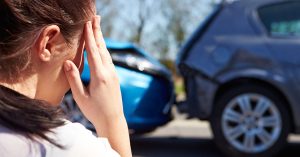
After a car accident is a critical time to seek medical care and screening for a concussion.
March is Brain Injury Awareness Month. Nearly 12 years ago, Massachusetts lawmakers passed legislation to develop a concussion safety program for high school athletes. Before they play, student-athletes and their parents must now learn about concussion symptoms. If students are injured, they must follow step-by-step guidelines for recovery. The goal is to make sure students fully heal from concussions.
Just as students have learned about concussions, Brain Injury Awareness Month offers others a chance to learn.
These are essential lessons, helping us care for ourselves and our families. The sooner one identifies potential concussion symptoms, the sooner they can seek a medical evaluation and begin rest and recovery. Below, we write about concussions, symptoms and high-risk situations when one may consider seeking a medical evaluation as a precaution.
What is a Concussion?
A concussion is often called a mild traumatic brain injury or “mild TBI.” A concussion may follow a bump, blow or jolt to the head, or a hit to the body that causes the head and brain to move quickly back and forth, according to the Centers for Disease Control and Prevention (CDC).
There may be no visible bruising, skull fracture or head injury, but the sudden movement can impact the brain’s function.
When one suffers a concussion, they may experience a range of symptoms impacting their health. It can be very difficult to read the symptoms, which may include one or more symptoms:
- headaches
- memory loss
- feeling groggy
- difficulty sleeping (or sleeping too much)
- mood and behavior changes
- balance problems
- slurred speech
- dizziness
- nausea or vomiting
- confusion
- decreased coordination
- sensitivity to light
- irritability
- In adults, one pupil may appear larger than the other.
Symptoms may appear right away or in the hours after a concussion, or they may be delayed a few days and weeks.
One misconception is a person will lose consciousness if they suffer a concussion. This is not always true. In fact, on the sports field, one coach said athletes only lose consciousness in about 10 percent of all concussions cases (Source: Heads Up Video: What is a Concussion?, CDC).
When to Consider Seeking Medical Care
As important as it is to learn about concussion symptoms, there are also times when you should just receive medical care as a precaution. This includes after children’s injuries, sports injuries, car accidents, falls or bicycle accidents.
Children and Student-Athletes

Respond promptly if you suspect your child has sustained a concussion.
Start learning now before you suspect a possible injury. Look to your child’s pediatrician and school for information on concussion prevention, symptoms and how to respond to a potential concussion. This is important because your child’s brain is going to support them throughout their life and by understanding a few basics, you can minimize their risk of suffering an injury. But if your child does suffer a concussion at some point, what you learn now will help you be ready to help them receive care and fully heal before they start their full routines up again. To help you get started, read our page on the Massachusetts sports concussion safety law and helmet laws for children. Another resource is the CDC Heads Up web page.
Motor Vehicle Crashes
Motor vehicle crashes are a leading cause of concussions and traumatic brain injury. The violent force of a collision can cause many injuries, from whip-lash to broken bones and head injuries. One can suffer a concussion in crashes at any speed and unlike other types of injuries, see no visible signs. One does not have to hit their head to sustain a concussion.
It can be hard to know whether you were injured after a car accident, so it is best to be proactive and call your primary care physician or visit a hospital emergency room.
Falls
When someone falls and hits the ground, they can suffer a concussion and it may be hard to recognize the signs, especially if the person is alone.
Older adults and younger children are more vulnerable to suffering falls. They are also at the highest risk for going without treatment. Consider how difficult it is for many adults to recognize they may have suffered a concussion; then think about young children, who may have limited speech. When it comes to young children, look for signs of discomfort, such as constant crying, trouble sleeping or the child may not eat. Contact your child’s pediatrician so they can advise you on the next step.
As for older adults, the CDC reports more than 34,000 adults age 65 and older died in falls in 2019. Many of these falls involved TBI and broken bones.
If you have an older relative or friend, talk to them about the importance of seeking medical care after any type of fall. Immediate treatment can help them identify whether they have sustained a concussion or other injuries. This puts their primary care physician in a good position to help them manage their recovery, with their full understanding of the person’s medical conditions and what medications they take.
Bicycle-Related Head Injuries
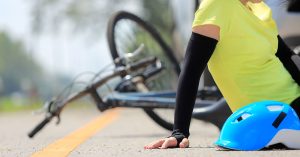
Cyclists can suffer many serious injuries in a crash. Always visit a hospital emergency room as a precaution.
Make a plan for safety. Should you ever fall on your bike or be involved in a bicycle accident, commit to seek immediate medical care right away. Have a doctor evaluate whether you sustained a concussion.
Medical care is critical for cyclists. In addition to concussions, cyclists are vulnerable to suffering broken bones around the face, jaw and fractured teeth in crashes, along with other injuries. While you may try to treat your own pain, a medical exam is the best first step to determine the source of all your swelling and injuries.
As a cyclist, you can take an important step and protect against head injury by wearing a helmet. When cyclists wear helmets, the reality is they may still suffer injuries in a collision. But cyclists are more likely to survive a bike crash without the cognitive, physical or mental complications of a severe and traumatic brain injury. This is critically important because it improves one’s long-term chances for making a full recovery.
According to the CDC, helmets reduce the risk of head injury by absorbing much of the impact energy from a fall or a bicycle accident. Helmets protect the skull and brain from more severe injury.
After a Concussion, The Importance of Follow Up Medical Care
Another time to consider medical care is in the days, weeks and months following your initial treatment for a concussion. It is important that you fully heal. If you suffer a second concussion while you are still recovering, you are at risk for second impact syndrome and long-term complications.
The CDC reports many concussions are not fatal. Many people recover from concussions within a few weeks, with rest, plenty of sleep and patience.
But some injuries take more time. The National Institute of Health reports one study found nearly a quarter of patients struggle with physical and mental problems related to a concussion a full year later. Another study tracked 831 patients at 11 major trauma centers across the country and found not every patient receives follow-up care.
- Within three months of their injury, fewer than half of the patients – 44 percent – had followed up with a health care professional.
- Notably, when patients visited medical centers with dedicated TBI clinics, they were more likely to receive follow-up care.
- Patients who had more serious injuries (those who had CT Scans that showed tissue damage) had a higher rate for follow-up care, but even then only 61 percent sought follow-up care.
There are many reasons patients may not follow up after a concussion. This study noted just 42 percent of patients received educational materials as they left treatment; just 27 percent received a follow-up call from the hospital.
Make it your priority to follow up with your primary care doctor for as long as it takes.
Follow your doctor’s instructions for every phase of your recovery: when you are ready to drive and go back to work. Follow any limits your doctor sets, such as restricting cell phone use.
Take the family member along to your doctor’s appointments. This gives your loved one a chance to learn about the symptoms of a concussion and how you should progress.
Ask a loved one to play an active role in your treatment and help you observe your recovery. You may need help tracking activities at times, such as how many hours you sleep or how many times you contact your doctor with concerns. Write down any medical instructions you receive, or print messages from your online medical records, so you and your loved one can review them together over the next few months.
Free Legal Consultation – Boston TBI Attorneys
At Breakstone, White & Gluck, our Boston personal injury lawyers have over 100 years combined experience representing those who have been seriously injured or killed by the negligence or wrongdoing of others.
Our lawyers have extensive experience representing clients who have suffered concussions and traumatic brain injuries as a result of someone else’s negligence, helping them recover compensation for their medical expenses, loss of future income and other damages.
Our attorneys represent clients in Boston, Cambridge, Arlington, Somerville, Everett, Quincy, Milton and across Massachusetts. If you have been injured, learn your legal rights. For a free legal consultation, call 800-379-1244 or 617-723-7676 or use our contact form.
Helping Children Remember Bicycle Helmets During Back to School
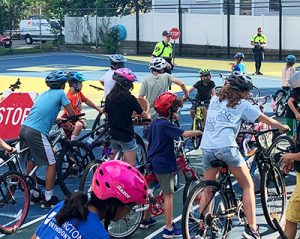
On your mark, get set, go! Breakstone, White & Gluck was pleased to donate bicycle helmets for children at the Arlington Police Department’s Bicycle Safety Day.
For many children, back to school means back to the school bus. But more and more, many students are walking or biking to school.
Back to school is a good time to introduce children to bicycle safety and this year, Breakstone, White & Gluck was pleased to partner with the Waltham and Arlington police departments to give helmets to children.
On Saturday, August 28th, the Waltham Police Department gave away free Project KidSafe helmets to children at the “Meet the New Chief Day.” The Arlington Police Department also gave away free helmets at Bicycle Safety Day on August 24th at Gibbs Junior High School, where many students walk or bike each day to class.
Our Tips to Help Children Wear Bicycle Helmets Back to School This Fall in Massachusetts
A new school year means a new routine. Whether you or your child ride daily or on occasion, we urge you to commit to wearing a helmet.
According to the National Highway Traffic Safety Administration, wearing a properly fitted helmet is the “single most effective way” to reduce head injuries and fatalities resulting from bicycle crashes. The Insurance Institute for Highway Safety reports the majority of cyclists who ultimately die after a bike crash first sustained a head injury as their most significant injury.
Children Must Wear Bicycle Helmets Under Massachusetts Law. Under Massachusetts law, cyclists who are 16 and younger are required to wear helmets when riding a bicycle. Helmets should be properly fitted and meet the safety standards set by the Consumer Product Safety Commission.
Beyond safety, there are other consequences. A police officer can actually impound your child’s bike for up to 15 days if they are caught riding without a helmet in Massachusetts, though many officers work hard to avoid this step and would rather encourage helmet use.
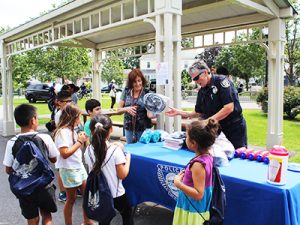
Waltham police officers give away free bicycle helmets at the “Meet the New Chief” event in August.
Why Parents and Adult Cyclists Should Wear Helmets. Cyclists of all ages should wear helmets to protect themselves.
As a parent, if you wear a helmet and make sure your child wears one when you ride together, your child will take notice. They are more likely to wear a helmet even when you are not there and they will have some practice at fastening their own helmet.
Label Your Child’s Helmet. Write your child’s name inside the helmet, on the strap or on the outside of the helmet.
Wear Your Helmet; Do Not Carry It In Your Backpack. Many children (and adults) ride, then put their helmets in their backpack while they are at work or school. Encourage your child to keep their helmet outside their backpack so they put it right on.
Buy a Durable Bike Lock. Purchase a durable bike lock in case your child cannot find their helmet and has to walk or get a ride home from school or a friend’s house. Keep this on their bike at all times. Insist that your child should contact you and never ride without a helmet.
Buy Your Child a Spare Bike Helmet. Purchase your child an extra bicycle helmet now before they misplace theirs. Unless you live near a bike shop, it can be difficult to step away from your routine to go purchase a bike helmet right away, especially during the busy Fall season.
At the same time, purchase a spare helmet for yourself, too. Keep your spare at home or at the office. This will come in handy if you damage your helmet, lose it or decide you want to take the Blue Bikes bikeshare home.
Free Legal Consultation – Boston Personal Injury Attorneys
With more than 100 years combined experience, Breakstone, White & Gluck has been consistently recognized as a top-rated Boston personal injury law firm. Our attorneys specialize in representing those injured by negligent driving, bicycle accidents, premises liability accidents, defective and unsafe products, construction accidents, medical malpractice and wrongful death.
If you have been injured, learn your rights. For a free legal consultation, contact Breakstone, White & Gluck at 800-379-1244 or 617-723-7676 or use our contact form.
Breakstone, White & Gluck Donates 100 Children’s Bicycle Helmets to the Everett Police Department
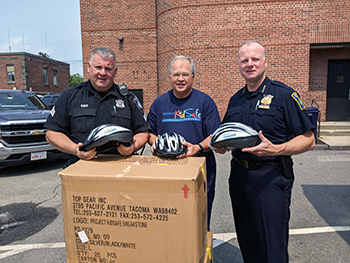
Attorney David W. White delivered 100 helmets from our Project KidSafe campaign to Everett Police Chief Steven A. Mazzie and Sgt. Joseph Gaff.
As summer continues, more children are riding bikes and Breakstone, White & Gluck is pleased to be donating bicycle helmets through our Project KidSafe campaign. This morning, Attorney David W. White delivered 100 bike helmets to Everett Police Chief Steven A. Mazzie and Sgt. Joseph Gaff.
This is the 6th year Breakstone, White & Gluck has made the donation through the Everett Police Department. Each year, our attorneys donate the helmets and the Everett Police Department decides how to distribute them to best reach children who need one. We are excited to see what this year holds!
Breakstone, White & Gluck and our Project KidSafe Campaign
Founded in 1992, Breakstone, White & Gluck represents those who have been injured by negligence across Massachusetts. Our attorneys are committed to encouraging children to wear helmets to protect against head injuries. Through our Project KidSafe campaign, we have now donated more than 33,000 helmets to children across Boston and Massachusetts.
Breakstone, White & Gluck Partners With Massachusetts Police Departments on Children’s Bike Safety
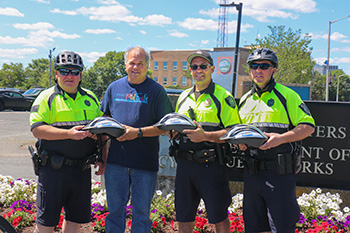
Left to Right: Quincy Police Officer Christopher Bulger, Attorney David W. White, Quincy Police Lt. Robert Bina and Quincy Police Officer William Mitchell.
Breakstone, White & Gluck is pleased to continue our partnerships for bike safety with local police departments in the Boston area.
As part of our Project KidSafe campaign, Breakstone, White & Gluck will donate children’s bicycle helmets to 10 local police departments during 2021.
In June, our attorneys were pleased to deliver helmets to the Quincy Police Department, Lynn Police Department, Norwood Police Department, Brockton Police Department and Randolph Police Department. We donate the helmets, but each department decides the best way to give the helmets away to children in their community who need one or who need a replacement helmet to ride safely. The police departments may organize a bike rodeo, safety event or set up a table at a community festival. Or officers may keep the helmets on hand to give away as they come across children who need one.
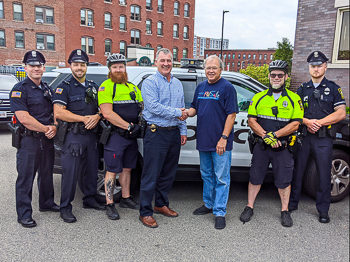
Attorney David W. White visits with Lynn Police Chief Christopher P. Reddy and his officers in mid-June. As part of our Project KidSafe campaign, Breakstone, White & Gluck was proud to donate children’s bicycle helmets to Lynn PD again.
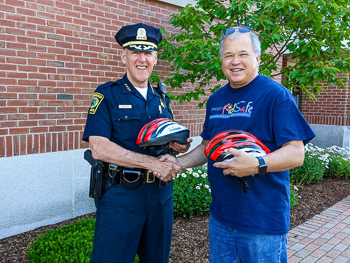
Norwood Police Chief William G. Brooks with Attorney David W. White. Breakstone, White & Gluck donated bicycle helmets to Norwood Police to give away to local children who need one.
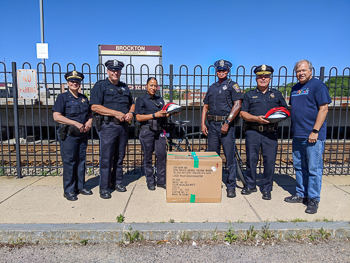
Brockton Police Chief Emanuel C. Gomes and his officers receive a bicycle helmet donation from Breakstone, White & Gluck and our Project KidSafe campaign.
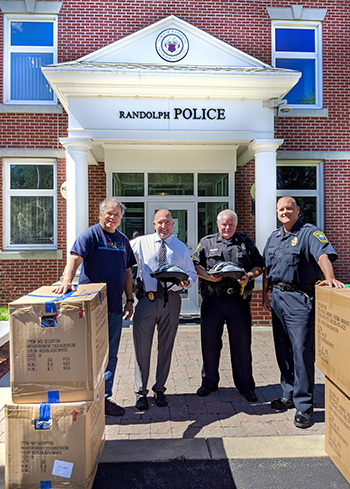
From left: Attorney David W. White delivered bicycle helmets to Randolph Police Chief Anthony Marag for the department’s bike safety event on June 26, 2021.
Read about our donation to Randolph Police.
About Breakstone, White & Gluck
Breakstone, White & Gluck is a top-rated Boston personal injury law firm. Our attorneys are committed to encouraging children to wear helmets when riding a bike to protect against head injuries. This is the law in Massachusetts. All cyclists who are 16 and younger must wear helmets when riding, but we hope our donations also encourage parents and older cyclists to wear helmets and protect themselves.
Through our Project KidSafe campaign, Breakstone, White & Gluck has proudly donated more than 33,000 bicycle helmets to children across Massachusetts.
The Importance of Traffic Cameras in Establishing the Truth: A Video Speaks a Thousand Words
Attorney Ronald E. Gluck recently wrote an article touching on the importance of traffic cameras in his investigation for his client, a cyclist who was seriously injured by a truck. We invite you to read the article, “The Importance of Traffic Cameras in Establishing the Truth: A Video Speaks a Thousand Words,” which is published on the Charles River Wheelers’ website.
You can read more of Ron’s articles by signing up for WheelPeople – The Charles River Wheelers’ newsletter – or by visiting Breakstone, White & Gluck’s website.
Surprise! New Bicycle Helmets for Cyclists in Dedham Bike Maintenance Class
Surprise! Breakstone, White & Gluck gave away free Project KidSafe helmets to cyclists who signed up for the Basic Bike Maintenance Class at the Dedham Public Library earlier this month. Quincycles led the small class outside the library while Breakstone, White & Gluck was pleased to donate the bicycle helmets as part of our Project KidSafe campaign. Breakstone, White & Gluck first teamed up with Quincycles three years ago.
Quincycles does a great job of distributing a few helmets here and a few there to cyclists who attend its community classes, most of which are held in Quincy.
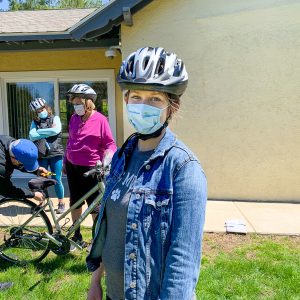
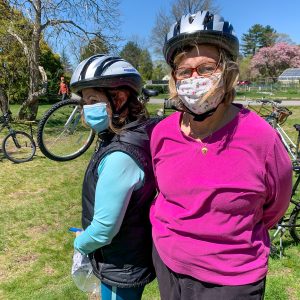
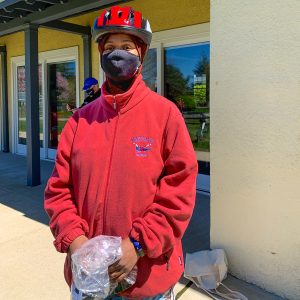
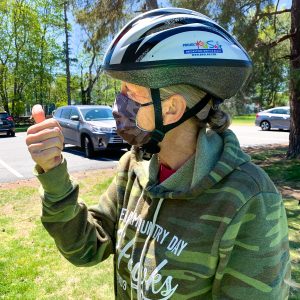
About Breakstone, White & Gluck and Our Project KidSafe Campaign
The attorneys of Breakstone, White & Gluck launched our Project KidSafe campaign in 2013 and have now given away more than 30,000 bicycle helmets in Boston, Cambridge, Somerville, Everett and across Massachusetts. We invite you to follow our 2021 donations at www.facebook.com/bwglaw.
Massachusetts Cyclists May Finally Get Three Feet for Safety
 Cyclists may get a little more room for safety if lawmakers pass the road safety legislation Gov. Charlie Baker proposed this week.
Cyclists may get a little more room for safety if lawmakers pass the road safety legislation Gov. Charlie Baker proposed this week.
On Monday, the Baker-Polito administration filed an expansive road safety package, which among other changes, calls for a new primary seat belt law and a controversial measure allowing cities and towns to install red-light cameras.
One proposal – to be called Haley’s Law – seeks much steeper penalties for drivers who operate with a suspended license. Currently, drivers may face fines and/or up to 10 days in jail for the first offense in Massachusetts per M.G.L. c. 90, § 23.
With the new legislation, a driver who lets their license lapse, then drives could face up to $1,000 in fines and 5 years in prison for the first offense. Drivers who cause auto crashes resulting in serious injury could face up to 2 ½ years in a House of Correction. There would be a mandatory two-year sentence, and up to 10 years imprisonment, for drivers convicted in fatal crashes.
The legislation is called, “An Act Relative to Improving Safety on the Roads in the Commonwealth,” and was filed as Massachusetts re-opens after COVID-19. The pandemic changed everything on our roads. But despite lighter traffic, our roads were not safer last year.
According to state figures, Massachusetts saw 334 traffic fatalities during 2020, compared to 336 in 2019.
Safety Reforms for Massachusetts Cyclists
For cyclists, there are two significant proposals: a 3-foot safe passing distance and a truck sideguard mandate for all state-owned and operated trucks.
3-Foot Safe Passing Distance
When traveling near cyclists, the legislation would require drivers to maintain a three-foot safe passing distance and a safe and proper speed. Drivers would have the same responsibility near cyclists traveling without a protective barrier, such as a protected bike lane with flex posts. 36 other states have safe passing laws, according to the Baker-Polito administration. The proposed legislation would give both drivers and future road projects more direction on how to accommodate cyclists. Massachusetts lawmakers have not acted on similar legislation in previous sessions.
Most drivers know they must stay at least three feet away as a precaution to avoid bicycle crashes. But currently, Massachusetts traffic laws only recognize that drivers must pass cyclists at a “safe distance.” There is no consistent message on how much room to give cyclists.
Massachusetts traffic laws currently state in, “approaching or passing a person on a bicycle the operator of a motor vehicle shall slow down and pass at a safe distance and at a reasonable and proper speed.” M.G.L. c. 90 § 14. Drivers must “wait for a safe opportunity to overtake” a bicyclist or other vehicle, per M.G.L. c. 89 § 2.
Stronger Truck Safety Equipment Requirements
The Baker-Polito administration is calling for state-owned and operated trucks to utilize safety equipment such as sideguards, convex mirrors and cross-over mirrors. All these state vehicles weighing over 10,000 pounds would have to comply by Jan. 1, 2024.
The goal is to reduce the risk of injury and death to pedestrians and cyclists, the most likely victims in truck crashes, according to the Volpe National Transportation Center.
In Boston, we have seen numerous cyclists killed when truck drivers and companies are neglect to look. In 2014, the Boston City Council took strong action, passing the first-in-the-nation truck sideguard ordinance. All city-owned and city-contracted trucks must now be equipped with sideguards, convex mirrors, crossover mirrors and blind-spot awareness decals.
Today, as you drive through Boston, you will see large trucks with sideguards. But Boston – and Somerville and Cambridge have similar regulations – can only influence safety within the city. This is why many – including Breakstone, White & Gluck – support passing statewide legislation requiring sideguards protect cyclists and pedestrians from being swept under trucks. While this proposal would only impact state-owned and operated trucks, this could protect many cyclists and potentially encourage private industry.
Support Truck Sideguards in Massachusetts
MassBike is advocating for the passage of “An Act Relative to Improving Safety on the Roads in the Commonwealth,” which will protect cyclists on Massachusetts roads. If you support the organization’s work, visit the MassBike website and learn how to contact your local legislators and voice your support.


